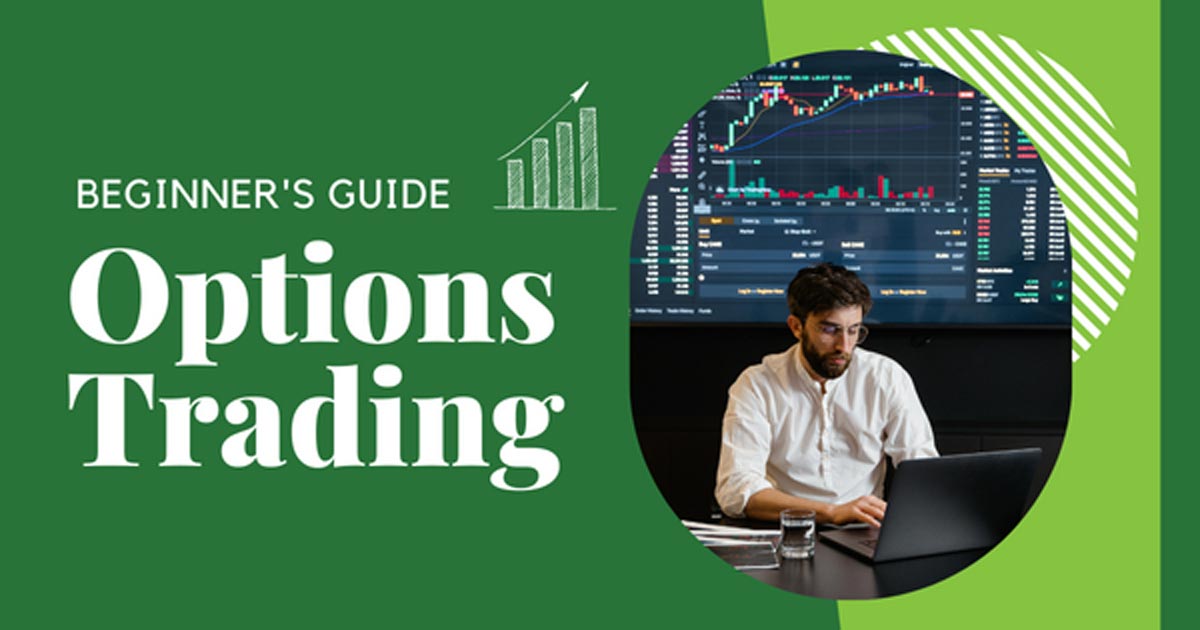Options trading for beginners might be the aspect that many novice investors and traders overlook. They all love to learn advanced techniques. Yet, how can you have flying leaps without a stepping stone? Building a solid foundation of basic options trading knowledge is the top priority for beginners. Scroll down this article to unfold effective strategies for entry-level options traders.
Options , also known as financial derivatives, allow buyers to buy or sell an underlying security at a predetermined price and expiry date. Instead of forcing buyers to process the contract, options provide the rights that buyers can do with their assets in their favor.
People can also mistake options for futures, another type of financial derivative. Yet, futures require buyers to obey the terms in the financial contract – to buy or sell the underlying assets by the expiration date.
Thanks to offering the rights rather than the obligations, options seem to gain more popularity against futures. Traders take options as the shields to hedge against high-risk situations and the stepping stone to leverage profits.
What is the Basic Options Trading for Beginners?

There are two main types of contracts in options, including call and put. Investors and traders are likely to use the results of technical analysis and fundamental analysis to draw insights into market trends. Then, they decide to buy or sell their call or put options. This section deep dives into some basic options trading strategies for beginners.
Buying Calls (Long Calls)
Buying a call option is a recommended action to the expectation that the price of an asset will rise. In case the market moves in the opposite direction, you only have the limited loss of the premium for the options.
So, buying calls is ideal for those who have confidence in a specific stock, ETF, index fund, etc., and want to downsize risks. Also, it can help them gain leveraged profits.
Assuming that you spend $10,000 on buying 100 shares of a $100 stock. Instead, you can only pay $2,000 for a call contract at a strike price 10% higher than the market price. It shows one advantage of options – leveraged instruments to amplify the potential benefits through smaller accounts.
For example:
If you want to buy $165-priced Apple shares with an investment of $5,000. It means you can buy around 30 shares. A scenario is that the stock price can increase by 10%, around $181, over the next month. Not to mention any brokerage commission or transaction fees, your portfolio will be around $5,445 – a net dollar return of $495, equivalent to 10% of the investment.
So, what will happen if you buy call options at the strike price of $165? The expiration date is about a month at the premium of $5.50/share. It means that a trader can buy nine options, equally to 900 shares. If the rise of the stock price occurs as expected, you can gain around $9,990, equivalent to 200% on the invested capital!
Such huge potential profits can come along with great potential losses, can’t they?
The good news is that if things go awry, you only have to suffer from the loss – the paid premium. It is a real bargain when you gain unlimited profits with limited losses.
Buying Puts (Long Puts)
A put option allows the holder the right to sell the underlying asset at the strike price by the expiration date. Those who are cautious of a specific stock, ETF, index, etc., or want to earn profits through the falling price actions.
The operation of a put option is opposite to how a call option works. While a put option leverages values from decreasing prices, a call option gains value from the rise of stock prices. When buying a put option, you will get the potential profits higher than the option’s strike price as the option will simply expire with no value.
For example:
When expecting the price of a security to decrease from $60 to $50, you can sell the stock short. Yet, it can be risky as your forecast can be wrong. So, the recommendation is to buy the $50 put option with a premium of $2. As a result, you will only lose $2 if the price does not drop as expected. Yet, you can make around $3 if the price of the stock declines to $45.
So, what is the point?
Same with the call options, a put option can leverage the trader’s return to maximum levels while the risks are limited.
Covered Calls
A covered call , as the name suggests, has an existing long position overlaid in the underlying asset. The model works like an upside call to cover the existing position size with the same amount. The writers of covered calls will gain income through the option premium, yet have limited potential for profitability.
Such options trading strategies are suitable for those who forecast no change or a slight rise in the underlying price and are willing to have limited profitability. Their goal is to have downside protection.
The standard of a covered call strategy is to buy 100 shares of the underlying security and sell a call option against those shares. A writer can collect the option premium when a trader sells the call option to cut down on the cost basis on the shares. In return, the trader will put the shares for sale at the option’s strike price to cap the trader’s upside profits.
For example:
Assuming that a trader buys 1,000 shares at $44 per share and writes 10 call options per which has 100 shares at the strike price of $46. These options will expire in one month. The total cost for 10 contracts is $250.
It means that the premium is $0.25 per share, which reduces the cost basis on the shares to $43.75. Covered calls guide the trader through the saturation of price movements.
In case of price rises above $46 before the expiry date, it is necessary to process the short call option (also known as called away) to make a profit of $2.25 per share (the deduction between the $46 strike price and $43.75 cost basis).
What is the risk/reward in this case?
If the share price is higher than the strike price by the expiration date, the short call option can make a trader suffer from bigger losses. They have to deliver the shares at the strike price when it can be lower than the market price. Yet, a covered call can help them with limited risk in the form of premium when selling the call!
Protective Puts
A protective put relates to buying a downside put to overlay an existing in the underlying security. The purpose of this strategy is to set the limit of your losses.
The option premium is a must, yet a protective put is a real shield for those who expect downside protection for their assets. It shares some common characteristics with a long put. Yet, it can help you gain profits from a downside move instead of an upside move.
In case of the rise of the stock’s price is higher than the put’s strike price at maturity, the option can become worthless. However, a trader only loses the premium but still benefits from the increased underlying price.
Reversely, if the price of the stock decreases, a protective put can largely cover the loss through the gains from the put option position. As a result, people take a protective put as an insurance strategy.
For example:
When buying 1,000 shares of Coca-Cola at $44, you can protect the investment from adverse price actions in the next two months through three options as below.
|
Options |
Premium |
|
$44 put |
$1.23 |
| $42 put |
$0.47 |
| $40 put |
$0.2 |
If you want to hedge against the risk of a price drop, you can purchase 10 at-the-money put options at $44. Or you can switch to a less costly out-of-the-money (OTM) option to lower the cost to under $200.
Long Straddles
A straddle enables you to capitalize on the future volatility without taking a bet on the real market moves. It means you can gain profits whether it moves up or down. A trader will buy both a call and a put option sharing the same strike price and expiry date on the same stock. So, it can be more expensive than other options trading strategies as it refers to the purchase of two at-the-money options.
Example:
The case is where a trader forecast large price fluctuations after an earnings announcement. The current price is $100. So, they create a straddle by purchasing both a $5 put option and a $5 call option at the strike price of $100.
The net option premium is $10. It can be a profitable investment if the underlying stock’s price is above $110 or below $90 at maturity.
What Are the Levels of Options Trading?

There are two factors in determining the levels of options trading , including the riskiness and complexity. The strategies that we share above are mostly in the basic learning options trading for beginners. So, they are mostly in level 1 and level 2. Another requirement is to maintain a margin account to gain the approval of the brokerages.
- Level 1 includes covered calls and protective puts. It happens when an investor is the owner of the underlying asset.
- Level 2 refers to long calls, puts, straddles and strangles.
- Level 3 comprises options spreads. It involves the purchase of one or more options while selling one or more different options of the same securities.
- Level 4 relates to the writing of naked options.
What is The Best Way to Learn Options Trading?
There are many ways to kick off your options trading. Yet it can be an odd lack if not mentioned online education. Many successful traders now share that they collect useful knowledge and tools through online classes.
The fundamentals play a crucial role in the success of an options trader. Without a solid base, how can you grow? So, finding the best sources to learn insightful options trading courses is one of the best shortcuts to becoming a professional options trader.
Besides online courses, you can find valuable information and knowledge through trading books. Warren Buffett, a living legend in investing, usually shares his favorite books of investment and options trading.
FAQs
Can a Beginner Trade in Options?
Yes, they can as long as they master the crucial basics. Getting themselves familiar with common terms and entry-level options trading strategies is the least they should do before trading options.
How Can I Start Trading Options?
You can start your options trading through simple applications to online brokerage. Another requirement is to have a margin account. After getting the approval, you can enter orders to trade options in the same way you trade stocks. An option chain is to determine which underlying, expiry date, strike price, etc.
How Much Can a Beginner Make Trading Options?
The rate ranges from 10% to 50% per trade. For example, if you start with $10,000 in an options contract, you can earn from $250 to $1,000. Yet, realistic trading involves risks so it is crucial to stay focused on the enhancement of trading knowledge and risk management.
When Do Options Trade During the Day?
You can trade options during normal stock market hours, from 9:00 AM to 04:00 PM EST.
Where Do Options Trade?
There are many specialized exchanges for options trading, such as the Chicago Board Exchange (CBOE), the Boston Options Exchange (BOX, and so on.
Can I Trade Options for Free?
Unfortunately no. Although many brokers offer commission-free options trading in stocks and ETFs, the service still involves fees per contract.
How Much Money Do You Need to Trade Options?
The minimum budget you have to deposit is lower than $1,000 for entry-level options trading. When the levels get higher from levels 2 and 3, your deposit can be $10,000. The recommended starting point is a range between $5,000 and $10,000.
Before You Go
Our guide on options trading for beginners shares basic strategies to help novice traders maintain their profitability amidst the volatility. Besides, you can find answers to relevant aspects, such as expected income from options trading, popular platforms, etc.
Hopefully, this blog can help you gain more confidence to start your options trading career. Stay tuned for our next articles with deep dives into not only options trading but also other instruments!


